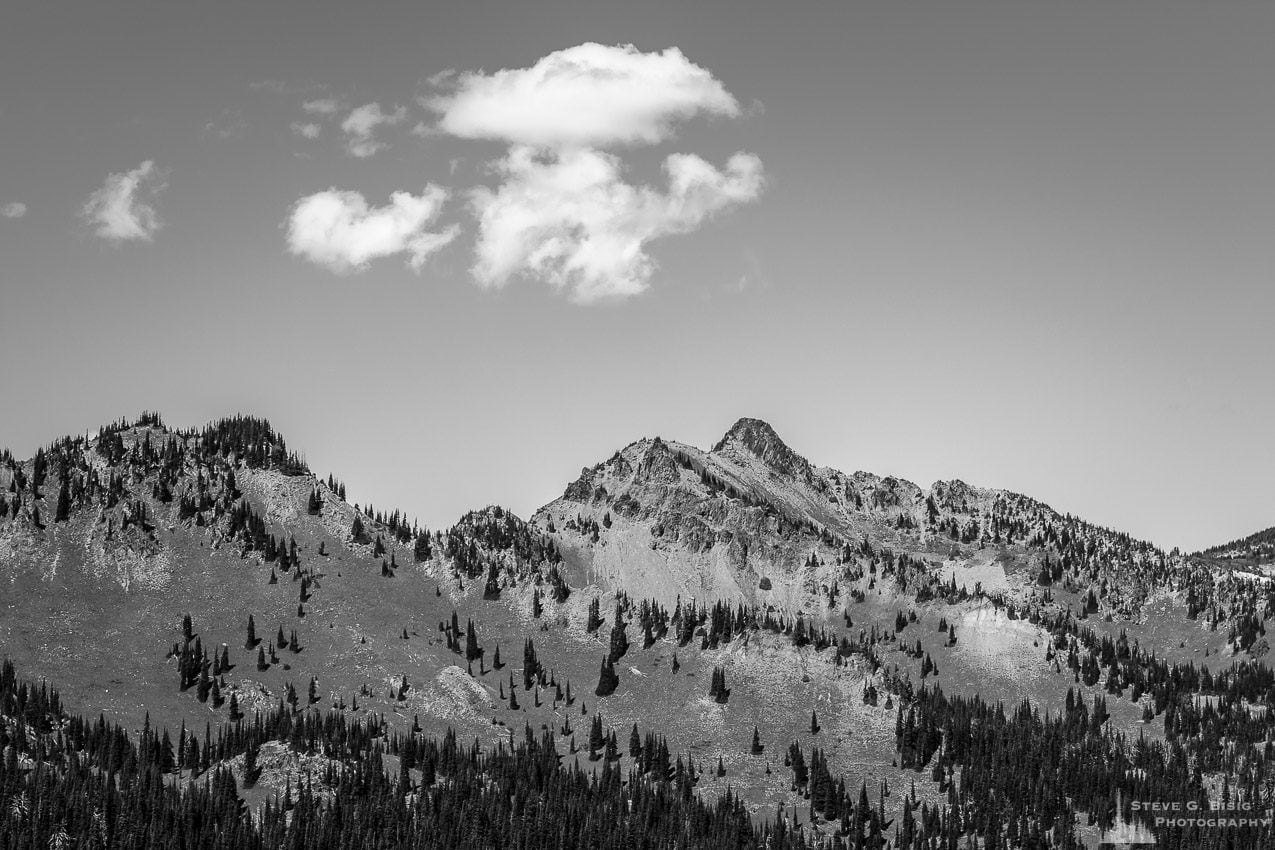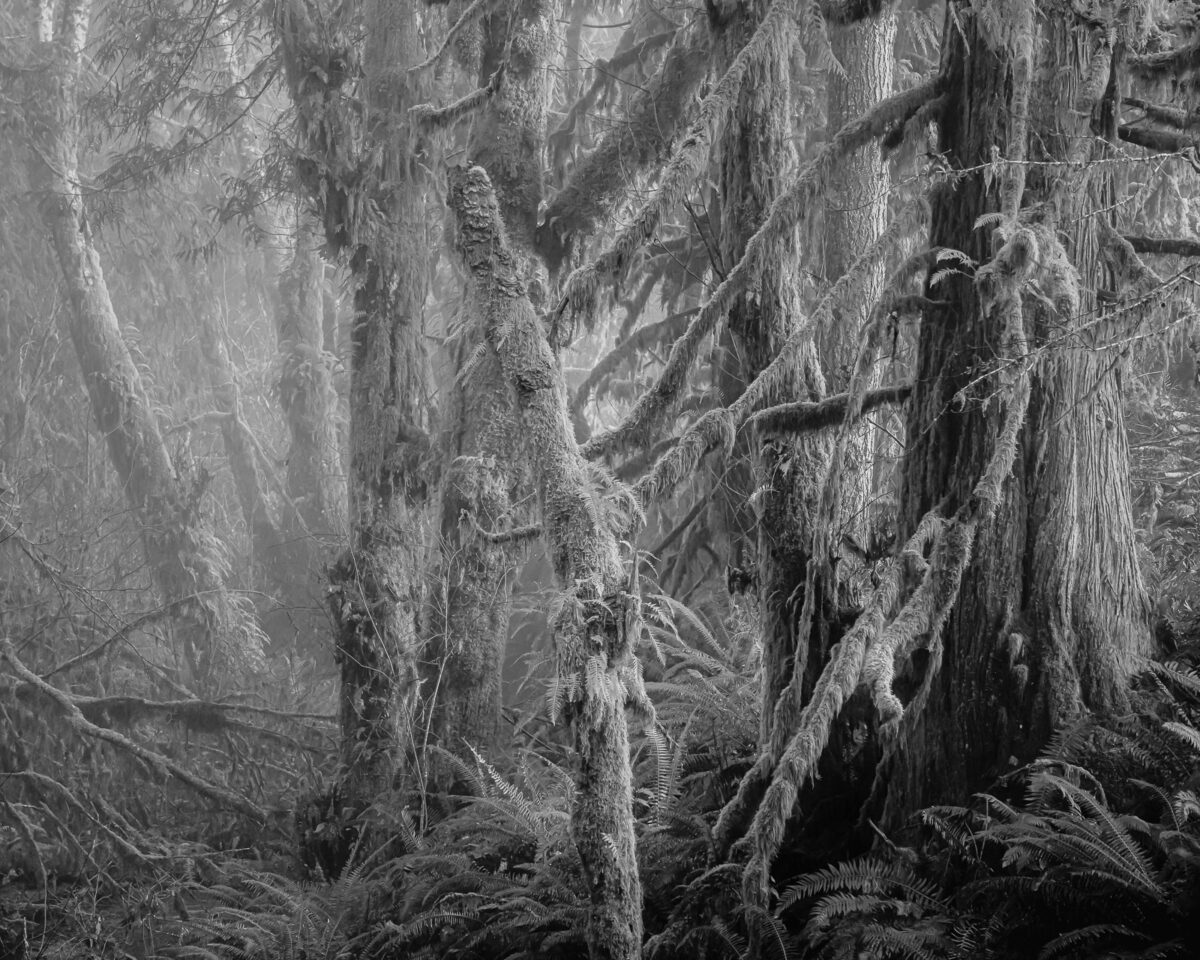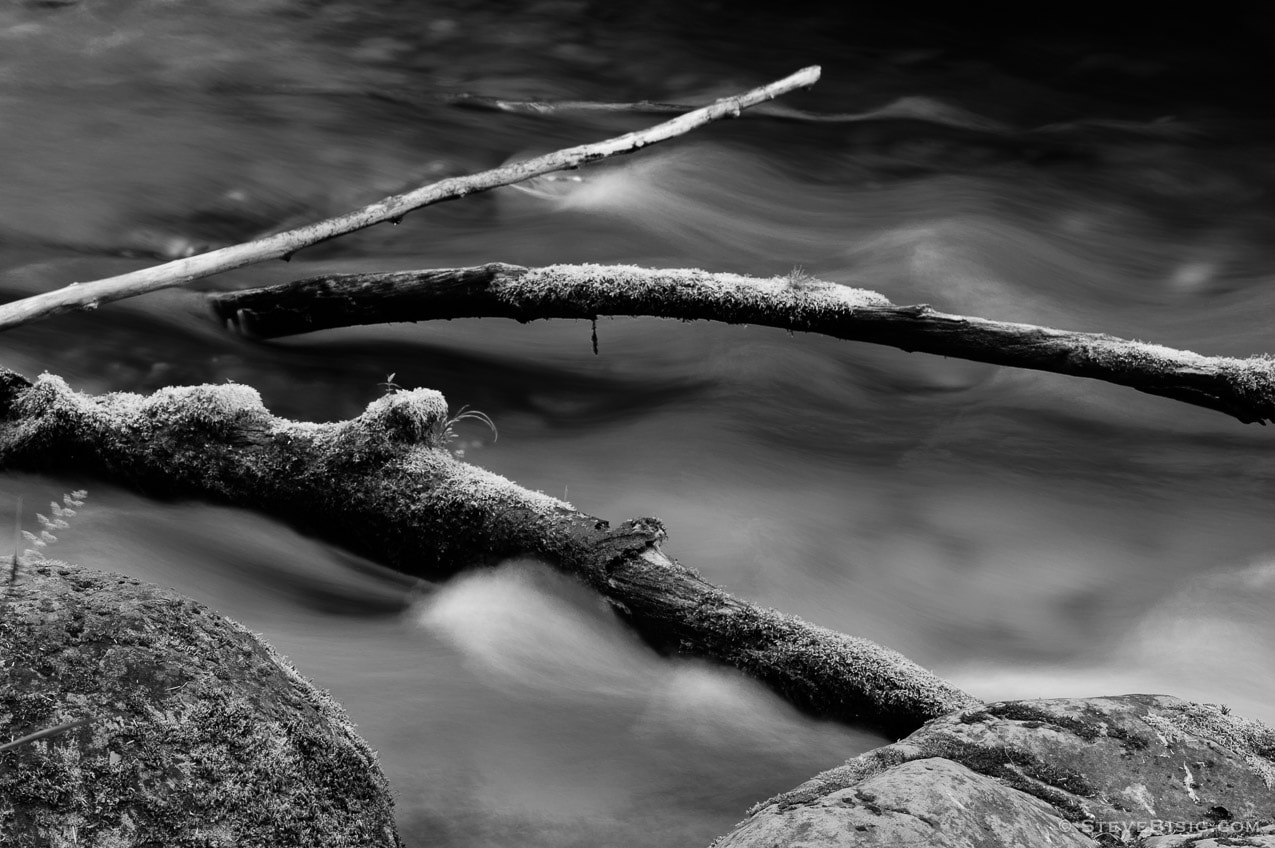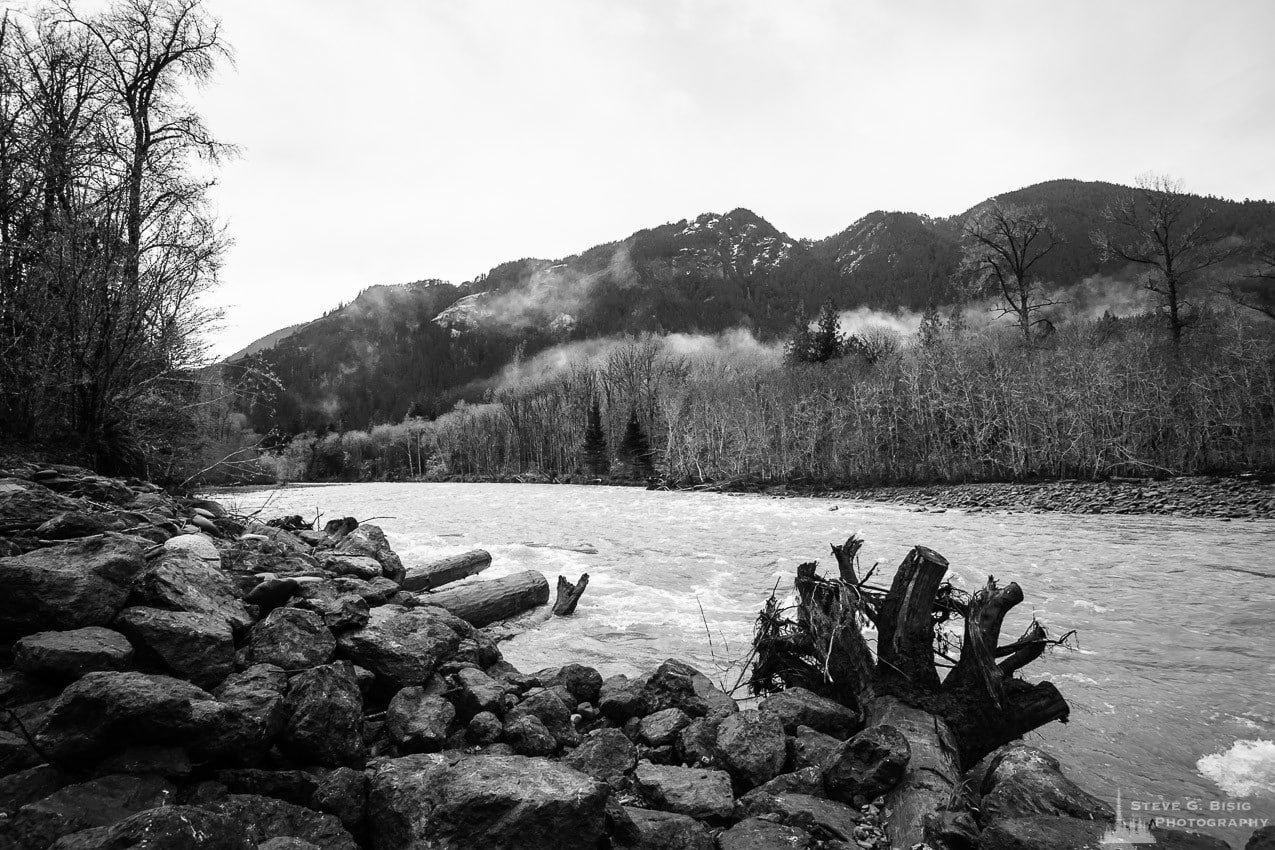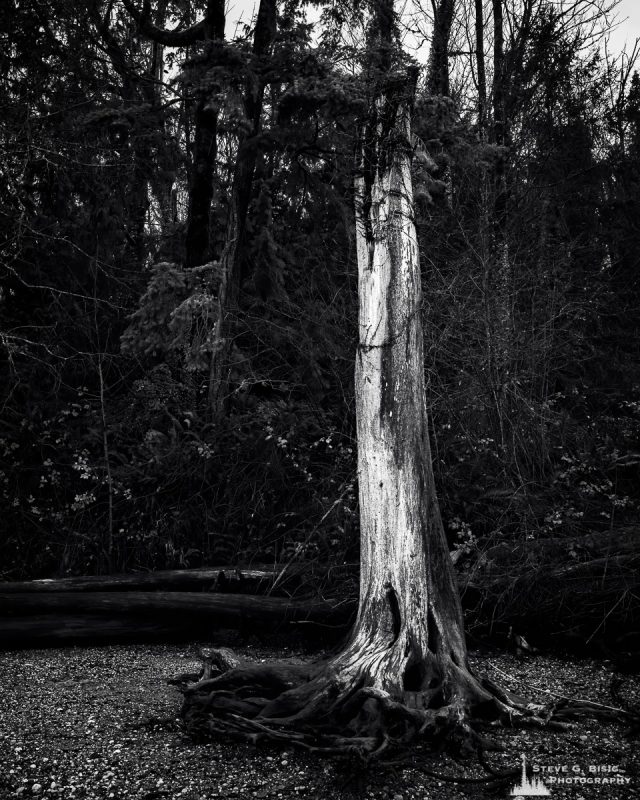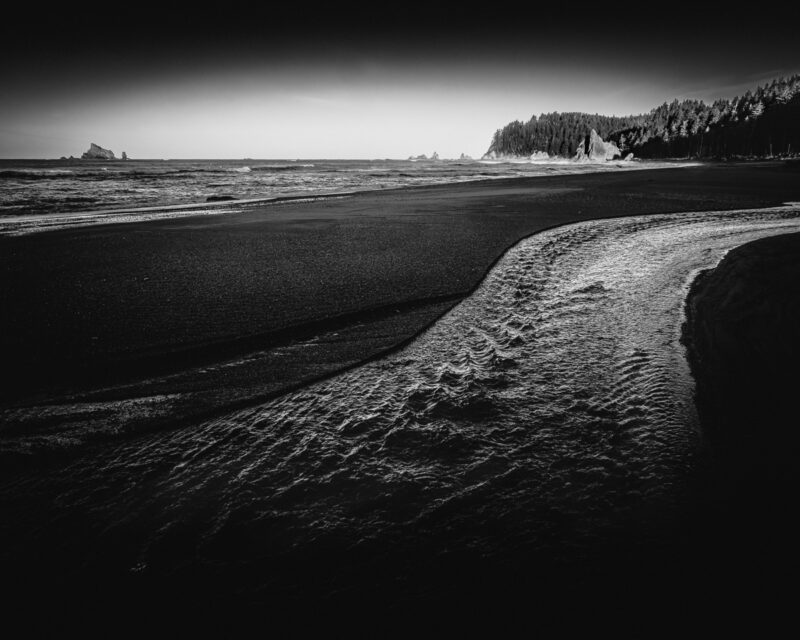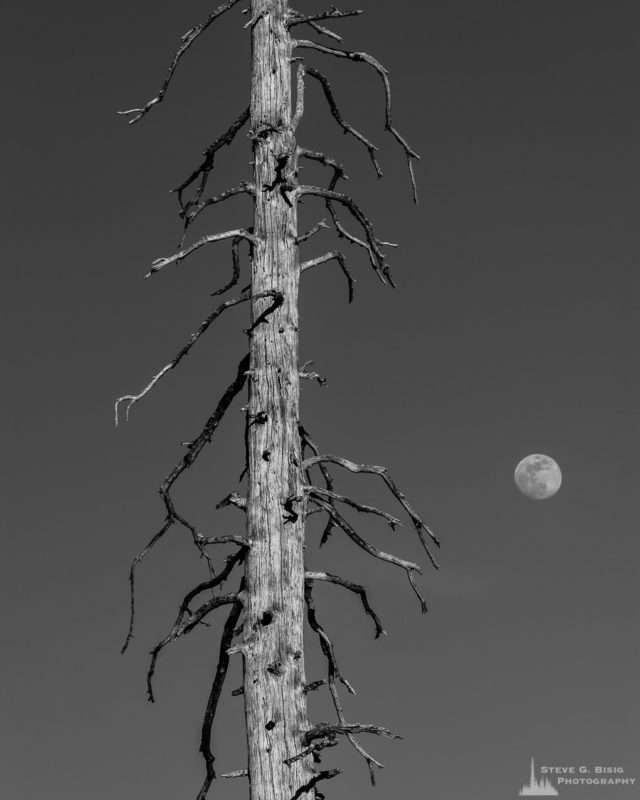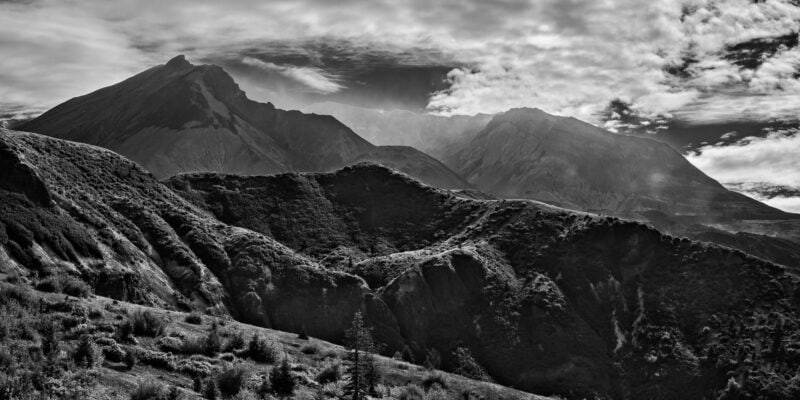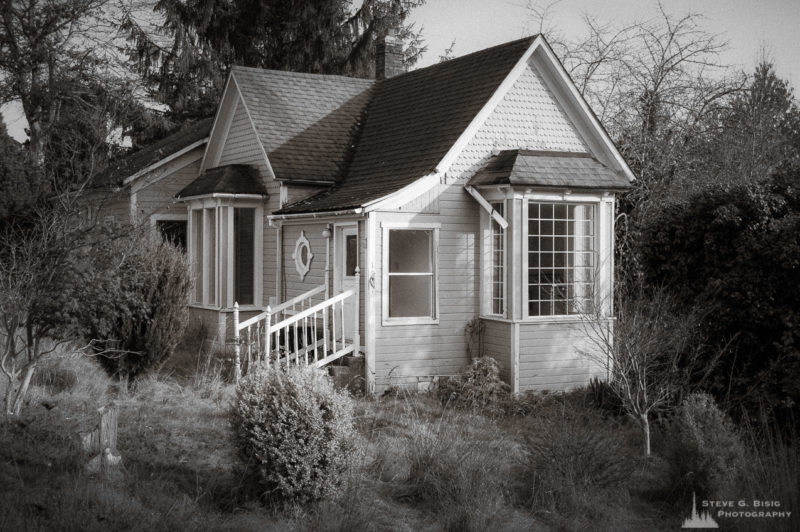There’s an old saying that the best things in life are free, and that rings true when I’m out in nature with my camera. I’m a photographer based in the Pacific Northwest, specializing in black and white photography. It’s all about training your eye to find the extraordinary in the ordinary.
A Love Affair with Monochrome
Black-and-white imagery has always captivated me. As a kid, I grew up surrounded by black-and-white photographs. Classic photographers like Ansel Adams, who turned nature into studies of shape and tonality, fascinated me.
It was in my early 40s that I discovered my passion for photography. As I tried to figure out where to take my photography, I split my creative efforts between color and black-and-white images. For years, I chased vibrant, colorful landscapes. Yet, color photography was a challenge for me, and over time, black-and-white landscape photography spoke to me on a deeper level. I became drawn to the subtler scenes, reflecting the world in monochrome tones. Eventually, I committed to working primarily in black and white, allowing monochromatic tones to guide my creative eye.
Finding Beauty in Subtraction
The unique meditative quality of black-and-white landscape photography forces you to see the world differently. With color stripped away, you can’t rely on vibrant hues to attract the eye because some color combinations become a sea of a single tone of gray. Instead, you must train your vision to appreciate light, shadow, texture, and form interplay.
It requires you to be present and study the scene before you. You can’t point your camera and snap away. The process slows, waiting for the elements to align into one compelling monochrome composition.
Imagine a misty morning in a forest. In a color image, you might be drawn to the lush greens of the foliage or the warm browns of the tree trunks. But render that same scene in black and white, and suddenly, the diffused light filtering through the branches takes on an ethereal glow. The delicate patterns it casts on the ground become the focal point, drawing your eye throughout the frame.
Those are the moments black-and-white photographers live for—when the lack of color allows you to perceive beauty you may have overlooked. It’s magical yet fleeting. A few seconds pass before the fog burns off or the sun finds a gap in the canopy, shifting the entire interplay of highlights and shadows.
This art form demands awareness and appreciation for nature’s quieter, more nuanced moments. When the lighting is sublime, the shadow placement exquisite, and my breathing is stilled, I capture that sense of stillness.
Black-and-white landscape photography requires patience and timing. The difference between a forgettable snapshot and an extraordinary fine art piece often comes down to a few brief seconds. If you’re not present and centered, you’ll miss the beauty hiding in the ordinary scene before you.
That’s the charm of monochrome landscapes. By removing color’s powerful ability to grab attention, you find deeper meaning and artistry in what’s left behind. This reductionist approach pushes you to capture the essence and poetry of a place. When you nail it, the image cuts through the noise of our frenetic world, allowing the viewer to be as present as you were in creating it.
A Study in Subtlety and Complexity
At first glance, landscapes may seem like basic backdrops—only comprising water, rocks, trees, and maybe some mountains. But strip away the color, and you realize how intricate and nuanced they are.
A creek becomes a kaleidoscope of texture. The smooth boulders, the turbulent rush of the rapids, froze into a tumbling sculpture of white-on-black. Or a still pond, where the surface blends into the reflected trees and clouds. It’s abstract yet grounded in the fundamentals of our physical world.
That’s part of what makes black-and-white landscape photography so fascinating. In one scene, I can create images that feel minimalist, detailed, straightforward, and open to interpretation. The contrast between simplicity and complexity draws me in.
The Endless Possibilities of the Pacific Northwest
Of course, a considerable part of what inspires me is the stunning natural landscapes I have within a few hour’s drive. Lush forests, towering mountains, and countless rivers and lakes call Washington State home. This is a photographer’s paradise, with new corners to explore no matter how often I venture out.
Whether I’m capturing the ethereal mists swirling over a subalpine tarn or studying the patterns of sun and shadow on a glacial river basin, there’s always something new to see and feel. Restricting my palette to black, white, and gray opens up a new way of seeing and appreciating these scenes.
I’m certainly not the first artist to be captivated by the beauty of the Pacific Northwest. But I like to think my monochrome landscapes bring a distinct perspective. I aim to distill these scenes into their most elemental, poetic forms and convey the profound sense of peace and wonder I experience in nature.
The Intersection of Technology and Art
The discussion of black and white photography would be incomplete without discussing the technological side. While the fundamentals of my craft remain rooted in patience, timing, and a keen eye, today’s cameras and editing software have expanded the creative possibilities.
From sensors optimized for precise tonal control to advanced editing techniques, modern technology allows me to sculpt my black-and-white images with unimaginable nuance and control. I’ve experimented with different looks and moods – brilliant, crisp, high-contrast scenes with a bold, dramatic feel to soft, atmospheric, almost impressionistic interpretations that evoke a more reflective, dreamlike quality. The creative possibilities enabled by today’s cameras and editing software are boundless when translating my artistic vision. I can stress certain elements, subdue others, and shape light and shadow into visual poetry.
At the same time, I’m committed to maintaining an ethical approach and only enhancing what I have captured in the field. I craft my black-and-white images as interpretations, not as digital or artificial intelligence fabrications. What you observe in the photograph was there. There’s an art to balancing technical and creative authenticity.
My camera is always ready to freeze those moments of quiet magic when I’m in a remote forest or exploring the lesser-known corners of a local park.
Sharing the Wonder
More than creating art for art’s sake, my genuine passion is sharing the awe and peace I find in nature with a broader audience through my work. So, while my technique and artistry are crucial, they’ll always take a back seat to evoke an emotional resonance in the viewer.
To that end, I offer fine art black and white prints of my most impactful landscape images and share the stories behind them. I hope you connect to the scene by peeling back the curtain on my process and mindset, feeling a fraction of the tranquility and wonder I experienced while creating it.
This is all about freezing those fleeting moments when the ordinary reveals its extraordinary splendor, unshackling us from life’s distractions and reminding us how much beauty is available if we pause and open our senses.
So, if these peaceful, reflective black-and-white landscapes call to you as they do to me, I invite you to explore my online print store. Reflecting on the ability to share a small piece of my world and the art form fills me with a sense of pure joy, regardless of whether you buy my work.
Let’s Connect!
Do you have a connection to black-and-white photography or landscape artistry? I’d love to hear about it! What moments in nature have brought you awe and stillness? Leave a comment, and let’s revel in the magic together.
Further Readings:
Monochromatic Visions, Deception Pass State Park, Washington, 2015

